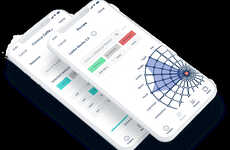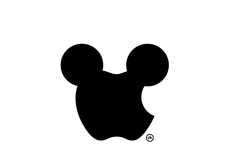
References: canadianbusiness & marketingmag
Trend Hunter CEO Jeremy Gutsche recently sat down with Murad Hemmadi from Canadian Business to discuss how brands can leverage big data through platforms like Trend Hunter to uncover new trends and opportunities faster.
In today's busy and constantly changing consumer market, brands simply don't have the time to scour the depths of the Internet for their next big idea. Services like Trend Hunter act as a filter for big data to help clients uncover, research and develop their ideas by offering high level reports from the findings. Along with its rockstar Millennial culture, Trend Hunter offers an online collection of cutting-edge trends that are sourced, scored and ranked daily using the power of the crowd. That data is then used to spot clusters of opportunity and trends in a wide variety of industries and topics -- from large scale to niche ideas -- with the help of a dedicated research advisor. As Gutsche puts it, "We believe in the power of the crowd."
How Trend Hunter uses big data to forecast the next big thing
CANADIAN BUSINESS MAGAZINE
"Trend Hunter’s readers are a captivated bunch, looking at an average of 20 articles per visit—a staggeringly high number for any website. To those eyeballs, the site appears not unlike fellow click-mills Buzzfeed and Mashable. But every article view and click on Trend Hunter’s litany of listicles and galleries is fuel for its data machine. “When you’re running thousands of people through these articles and tracking what they’re choosing next, you start to get a sense of preference,” says Gutsche. The company uses the data it gleans to compile what it calls Pro Trends, sets of related concepts and ideas that Gutsche believes expose gaps in the consumer market. That Ron Burgundy Christmas ornament isn’t just a novelty purchase—it’s an example of “modernized tradition,” which, according to Trend Hunter’s analysis, is an indication that younger consumers don’t much care for the rigid formalities of the holiday season.
It’s these kinds of insights that Trend Hunter’s clients—a roster of major brands that includes Samsung, Kellogg’s, Crayola and Nestlé—are paying for. For a starting price of $24,000 a year, subscribers receive a customized monthly report from an analyst detailing Trend Hunter’s findings. Brands can use their reports to answer specific questions (“What’s new in holiday products this week?”) or find inspiration (“We’re launching a line of winter clothing, so show me examples of loud sweaters”).
Figuring out what customers want is a $21-billion industry in the U.S., according to IBISWorld, and many major brands solicit advice from polling firms such as Ipsos Reid or the legacy research arms of advertising agencies like JWTIntelligence to help them spot the next big thing before it arrives. More and more, brands are turning to big data to find market insights, in the hope that it will yield more scientific and more granular views into consumer behaviour. But just as it takes a master craftsperson to cut, polish and give a rough diamond its shape, raw data ultimately requires a human being to make it shine. Data might add scientific sparkle to the business of finding the next big thing, but there’s still an art to telling us what the numbers mean. And that too is what companies pay people like Gutsche to do."
Read the full article at Canadian Business.
In today's busy and constantly changing consumer market, brands simply don't have the time to scour the depths of the Internet for their next big idea. Services like Trend Hunter act as a filter for big data to help clients uncover, research and develop their ideas by offering high level reports from the findings. Along with its rockstar Millennial culture, Trend Hunter offers an online collection of cutting-edge trends that are sourced, scored and ranked daily using the power of the crowd. That data is then used to spot clusters of opportunity and trends in a wide variety of industries and topics -- from large scale to niche ideas -- with the help of a dedicated research advisor. As Gutsche puts it, "We believe in the power of the crowd."
How Trend Hunter uses big data to forecast the next big thing
CANADIAN BUSINESS MAGAZINE
"Trend Hunter’s readers are a captivated bunch, looking at an average of 20 articles per visit—a staggeringly high number for any website. To those eyeballs, the site appears not unlike fellow click-mills Buzzfeed and Mashable. But every article view and click on Trend Hunter’s litany of listicles and galleries is fuel for its data machine. “When you’re running thousands of people through these articles and tracking what they’re choosing next, you start to get a sense of preference,” says Gutsche. The company uses the data it gleans to compile what it calls Pro Trends, sets of related concepts and ideas that Gutsche believes expose gaps in the consumer market. That Ron Burgundy Christmas ornament isn’t just a novelty purchase—it’s an example of “modernized tradition,” which, according to Trend Hunter’s analysis, is an indication that younger consumers don’t much care for the rigid formalities of the holiday season.
It’s these kinds of insights that Trend Hunter’s clients—a roster of major brands that includes Samsung, Kellogg’s, Crayola and Nestlé—are paying for. For a starting price of $24,000 a year, subscribers receive a customized monthly report from an analyst detailing Trend Hunter’s findings. Brands can use their reports to answer specific questions (“What’s new in holiday products this week?”) or find inspiration (“We’re launching a line of winter clothing, so show me examples of loud sweaters”).
Figuring out what customers want is a $21-billion industry in the U.S., according to IBISWorld, and many major brands solicit advice from polling firms such as Ipsos Reid or the legacy research arms of advertising agencies like JWTIntelligence to help them spot the next big thing before it arrives. More and more, brands are turning to big data to find market insights, in the hope that it will yield more scientific and more granular views into consumer behaviour. But just as it takes a master craftsperson to cut, polish and give a rough diamond its shape, raw data ultimately requires a human being to make it shine. Data might add scientific sparkle to the business of finding the next big thing, but there’s still an art to telling us what the numbers mean. And that too is what companies pay people like Gutsche to do."
Read the full article at Canadian Business.
Trend Themes
1. Big Data Analysis - Opportunity to leverage big data analysis to identify consumer preferences and uncover market gaps.
2. Pro Trends - Opportunity to develop sets of related concepts and ideas that expose gaps in the consumer market.
3. Market Insights - Opportunity to use big data for more scientific and granular views into consumer behavior.
Industry Implications
1. Market Research - Disruptive innovation opportunity to integrate big data analysis into market research strategies.
2. Trend Forecasting - Disruptive innovation opportunity to develop Pro Trends to guide product development and marketing strategies.
3. Business Consulting - Disruptive innovation opportunity to provide customized insights and reports using big data analysis.
0.8
Score
Popularity
Activity
Freshness























